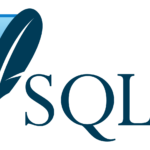Assembly language
A simple kind of computer programming is assembly language. This is used for writing computer software. This may immediately communicate with the already-installed computer hardware. It is referred regarded as a “low-level” language since it directly corresponds to the machine code that is executed by the computer’s CPU. In those circumstances, the assembly programming language is typically used. When a high level of computer hardware program performance is required or when the software developer requires direct access to the hardware.

Instruction mnemonics, which stand for machine language instructions to be carried out by the computer processor, are used to write assembly language code. Typically, text editors are used to create assembly language programs. These are next combined with an assembler into machine code. The computer can immediately run and comprehend the generated machine code.
The creator of an assembly language program has direct access to the underlying hardware, making it a powerful programming language. In contrast to higher-level languages like C or Python, however, assembly language code is also more challenging to understand and write. As a result, it is often only employed where hardware control or performance is crucial.
What assembly language
A basic programming language for computers is assembly language. It offers an exact match to the machine language commands carried out by the processor of the current computer. In certain scenarios, it is frequently deployed. Where you want a high level of hardware/software performance or where you require direct hardware control. Typically, assembly language programs are translated into machine code and run directly by the computer.
Advantage and disadvantage assembly language
Assembly language benefits.
- High performance – Since assembly language programs have direct access to the underlying hardware, they are typically quicker and more effective than programs written in high-level languages.
- Low-level control – Hardware may be controlled at a low-level using assembly language. Enabling accurate management of the computer’s resources.
- Smaller program size – Compared to programs written in high-level languages, assembly language programs might be more compact and smaller. Because they are written more succinctly and effectively.
Assembly language’s drawbacks include.
- Steep learning curve – and the fact that it is a low-level programming language, making it harder to learn than higher-level languages. Because it necessitates an understanding of machine language and computer architecture.
- Time-consuming – Assembly language programming requires more time from software developers than high-level programming does. Because assembly language programs are more challenging to design and need the software developer to have a more in-depth understanding of the underlying hardware.
- Non-portable – Programs written in assembly language are not portable. Therefore, they can only be used to run or test them on a certain kind of hardware. Furthermore, these programs are difficult to adapt to any other hardware systems. As a result, programs written in high-level languages are more flexible than those written in assembly language.
Characteristics of assembly language
The programming language assembly has some of the following properties.
- Assembly language is a low-level – programming language for computers. It offers an exact correlation to the machine language commands carried out by the installed computer’s CPU.
- Mnemonic Instructions – Assembly language employs mnemonic instructions, which are simpler to comprehend and remember than the binary code that computers utilize.
- Direct Memory Access – The assembly language allows for direct access to the hardware and memory of the machine. Giving the program designer total control over the system.
- Program Efficiency – Assembler-language programs are typically more effective than those created in high-level languages. Because they provide their creator direct access to the computer’s hardware.
- Processor-specific – Because Assembly language is processor-specific, it is difficult to move code from one processor to another.
- Steep learning curve – Assembly language is harder to learn than high-level languages because it demands the student to comprehend the machine language and computer architecture.
- Smaller program size – Compared to programs written in high-level languages, assembly language programs might be more compact and smaller. Because they are written more clearly and effectively.
Assembler type
In assembly language, there are often two different types of assemblers.
- One-pass assembler – A one-pass assembler only needs to read the source code of the assembly program once in order to produce the machine program code in a single pass. It is typically used to brief programs. They do not require sophisticated programming.
- A two-pass assembler – examines the source code of an assembly language program twice. Both the symbol table and the machine code are generated once. It is applied to big programs. Those that demand more complex processing, such as macros or subroutine-containing programs.
In addition to these kinds, macro assemblers exist. This enable programmers to create custom macros and include them into their assembly code. Cross assemblers are another tool that enables programmers to create code for hardware platforms other than the one they are presently using and then assemble that code on a separate computer system.
Difference between assembly language and machine language
Assembly language is a low-level computer programming language, which is the major distinction between it and machine language. It represents machine language commands using mnemonics. Machine language, on the other hand, is the most basic programming language. It is immediately performed in binary form (0,1) by the computer’s CPU.
Other significant distinctions between machine language and assembly language exist.
- Assembly language is more readable by humans – than machine language. Because it uses mnemonic codes, which are simple to comprehend and remember for humans.
- Syntax – Program syntax exists in assembly language. To high-level programming languages, which is comparable. Machine language, on the other hand, is written in binary code, which a computer can only read directly.
- Abstraction Level – Assembly language is a low-level language, according to the abstraction level. Which, in comparison to higher-level programming languages, is closer to the hardware. But compared to machine language, it is still more abstract.
- Flexibility – Assembly language is more adaptable than machine language in terms of flexibility. Because it enables the programmer to express memory locations and jump addresses using symbols and labels. It makes writing and maintaining complicated programs simpler.
- Portability – Assembly language is not portable, for example. Because the code is tailored to a certain processor or computer architecture. Machine language, on the other hand, is code that is unique to the computer’s processor and hardware, hence it is also not portable.
Assembly code
A low-level programming language is assembly code. It represents machine language commands using mnemonic codes. It is a symbol for the instructions in machine code. Which the computer’s CPU is capable of immediately executing. Text editors may be used to create assembly code, which can subsequently be combined into assembler programs to create machine language code.
Each assembly language command has a corresponding machine language command that the processor may carry out. For instance, on an x86 CPU, the machine language command “B8 01 00” would correspond to the assembly language instruction “MOV AXE, 1”. Typically, an instruction in assembly language consists of an operation code (opcode), one or more operands, and a message. Which define the memory address to access or the data to be handled.
System programming, creating device drivers, and programming low-level embedded systems all frequently require assembly code. When it is necessary to have direct hardware control. While high-level programming languages are easier to create and maintain than assembly code. This can lead to program code that is more efficient and provides its creator more control over the hardware that is already in place.
What is asm language
“Assembly Language” is what “ASM” stands for. This is a basic programming language for computers. It represents machine language commands using mnemonics. A computer’s CPU may directly execute machine code instructions that are represented symbolically in assembly language.
Each instruction in assembly language is a specific machine language command that the processor may carry out. Typically, an instruction in assembly language consists of an operation code (opcode), one or more operands, and a message. Which define the memory address to access or the data to be handled.
The creation of device drivers, low-level embedded system programming, and systems programming all use assembly language. Whenever hardware direct control is needed. Comparatively speaking, assembly language is more challenging to create and maintain than high-level programming languages. With better control over the hardware, the software developer may write code that is more effective.
Assembly compiler
A program is an assembly compiler, commonly referred to as an assembler. This converts the machine language instructions from the assembly language code. Which the computer’s CPU is capable of immediately executing. Assembly language source code is read by assembly compilers. Creates an object file that includes the machine code instructions by converting each assembly language instruction to its equivalent machine language instruction.
The translation process used by the assembly compiler is typically two passes. To learn about labels, variables, and other symbols used in the code, the assembler first analyses the full source code. The assembler converts each assembly language instruction into its equivalent machine code instruction in the second pass. Use the symbol table produced during the first run to resolve addresses and memory locations.
The final executable program can be made by fusing the generated object file with additional object files. A listing or map of the assembly language source code, which displays the matching machine code instructions and the memory locations they occupy, may also be produced by some assemblers.
NASM (Netwide Assembler), MASM (Microsoft Macro Assembler), and GAS (GNU Assembler) are examples of common assembly compilers.
Online assembly compiler
You may create and compile assembly language code using one of the many online assembly compilers available without having to install any software on your computer.
Here are a few of the most well-liked choices.
- Onlinegdb – is a free online IDE with an integrated assembler and debugger for C/C++ and assembly development. It supports several different operating systems and cpus, including x86, ARM, MIPS, and AVR.
- Jdoodle – is a free online editor and compiler that supports a number of programming languages, including assembly code. You can create, compile, and run programs online with support for x86 and ARM assembly programming.
- Ideone – Over 60 programming languages, including assembly code, are supported by the online debugging and compiler tool Ideone. Along with capabilities like syntax highlighting and debugging, it enables online code writing, compilation, and execution.
- Rextester – Assembly language is one of the computer languages supported by Rextester, an online compiler and code editor. It offers a console output so that you can see the program’s output in addition to allowing you to create, build, and run code online.
Keep in mind that the amount of code you may generate and the functionality offered by online compilers may be restricted. They hence might not be appropriate for all usage situations. Use caution while utilizing online compilers as well because they cannot ensure the security and secrecy of your code.
Asm language
Assembly Language is referred to as “ASM.” which is a simple computer language. In which the machine language commands are represented by mnemonics. Instructions from machine code are symbolically represented in assembly language. Which the current computer’s CPU processor may run immediately.






































































































































































